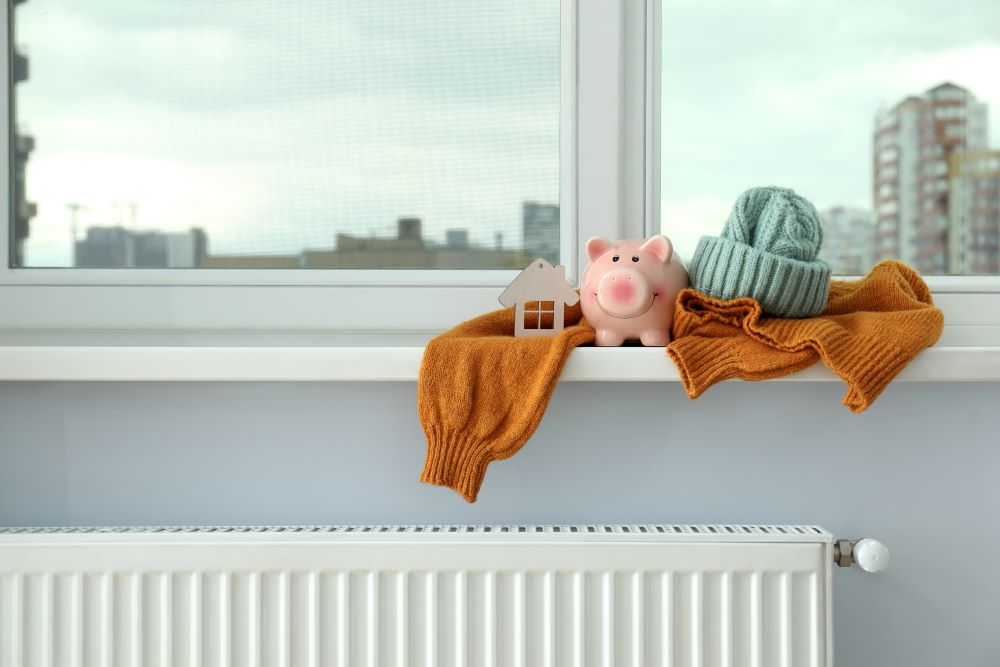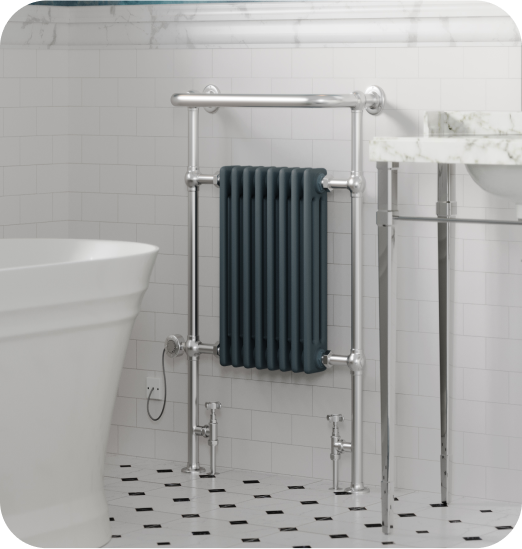
Why Are Radiators Placed under Windows?
Have you ever asked yourself why radiators are often fitted under a window? Is this random, a pattern adopted over time, or is there more to it?
At UK Radiators, we're here to lift the veil on this practice and get to the bottom of why radiators are placed under windows. If you're looking to install a new central heating radiator system, this guide will take you through the best places to position them.
Let’s take a look.
Is It Okay to Put a Radiator under a Window?
In short, yes! There are plenty of reasons why radiators are installed beneath a window. It’s been common practice for years, and the first reason why will come as no surprise…
-
Counter Heat Loss
Placing radiators under windows is a practice adopted to help counteract the cold air that can enter a room through the glass.
Windows, being a common source of heat loss, can create temperature variations within a room. As hot air rises, placing radiators under windows means that the heat emitted rises to counteract the downward draft of cold air. This is an attempt to maintain a consistent and comfortable temperature in the room.
This stems back from when double and triple glazing, as well as draught exclusion, were less common window features. Without this added insulation, heat would escape and cold air could enter a house more easily - either where the walls of the room are thinnest or through the windowpane.
-
Make the Most of Available Wall Space
Under window radiators optimise the use of available wall space.
If a large window already takes up the majority of one of your walls, making use of the space underneath it means the space on your other walls can be used for something else, like mirrors, shelves or artwork.
Chances are that the space beneath a window leaves little room for anything else. For more information on sizing your radiators to fit a particular space, check out our How to Size Your Radiator guide.
-
Quite Simply, They Likely Go with the Aesthetics
This is largely a matter of taste, but placing a radiator beneath a window could have one of two aesthetic benefits:
Firstly, if you don't particularly like the look of the radiator and see it as merely a necessity, a window can help draw attention away from it, being more eye-catching. This is especially true if you have longer drapes, which can minimise the appearance of windows even more (just be careful of affecting heat distribution with any obstructions).
Alternatively, if you've purchased a set of modern designer radiators and quite like their appearance, an under-the-window placement could help to draw more attention to them. In this way, you could make your modern fixtures somewhat of a feature, allowing them to add symmetry and act as a focal point in your living space, enhanced by any scenery through the window.
Of course, whether the radiator installation will enhance or minimise the aesthetic of the window area, as well as the surrounding room, will depend on the decor and furnishings you choose to complement the space.
-
Following Tradition and Historical Practices
Another reason that radiators are commonly placed beneath windows is simply due to the tradition, which was adopted over time. Changes in architecture and heating system designs have influenced people’s practices. In the past, windows were often less effective, being single-glazed, at insulating against outdoor temperatures.
Placing radiators under windows was a way to combat the chill from the cold glass surfaces, helping to offset heat loss and maintain a more comfortable indoor environment.
If you're renovating your room and want to break with tradition, be sure to check out our tips on how to move a radiator.
Tips for Homeowners when Choosing Your Radiator Placement
Pay Attention to Your Window Size
Something to keep in mind is: the larger your windows, the more heat loss you're likely to experience.
The heat in a room can be lost through the thinner windowpane, which, even with double or triple glazing, lacks the same level of insulation as the walls of a typical UK home.
Think of the surface of a window in cold weather acting like the opposite of a radiator, holding and distributing cold just like how a radiator holds and distributes warmth. The broader the window also means less surface area to fit a radiator nearby to counteract this cold air - especially with floor-to-ceiling windows.
So while you may experience a nicer view, pay attention to the heat loss you may experience.
This is especially relevant to conservatories - and we have a guide available if you're hoping to find out how to effectively heat your conservatory.
Keep Curtains Clear of Radiators
Should curtains cover radiators? Well, if you have curtains hung near your radiator, there’s a higher possibility that the radiated heat might get trapped or absorbed by the curtain. This means that the heating system will take a longer time to warm the space as the warm air has to get past the curtain barrier first before being able to heat the surrounding space.
If the time it’s taking to heat your surroundings is longer than it should be, this could be affecting your energy bills. Part of the trapped heat is exiting via the window rather than filtering through to your room - the exact opposite of what you want!
The key takeaway here is to keep your radiators away from the curtains to ensure good heating, as well as reduced energy bills and risk of a fire.
Should you tuck curtains behind radiators?
With the above in mind, you may feel inclined to tuck your curtains behind the heater so as to not trap any hot air and help insulate the room against cold draughts.
However, the entire surface area of modern electric radiators contributes towards their heat output, so this could restrict the flow of warm air out of the unit and into the room.
At UK Radiators, we'd recommend opting for shorter curtains, and if you prefer longer curtains, try to keep them to the sides of the radiator as much as possible, or make use of hooks or curtain ties to be sure they're out of the way.
Furniture Arrangement for Heating Efficiency
Similarly to radiators and curtains, it's not uncommon for people to have a settee, chairs, plants, tables or console table placed in front of a window either. If your radiator has to heat your room through obstacles like solid furniture, this could limit your ability to do this effectively.
Especially during the colder months, it might be worth deciding if clearing a space for heat to spread more freely would be worthwhile for improved heating efficiency and reduced heating time.
Is it more important for your room to look nice or to feel more comfortable through the winter months? We discuss obstructions in more detail in our how to guide - Where’s The Best Place To Fit A Radiator?
Have Confidence in the Placement of Your Radiators
Stay warm and informed with UK Radiators - we can provide you with guidance on radiator installation and positioning so that you can get the most out of your heating system. Give us a call on 0333 006 8227 or send your enquiry to sales@ukradiators.com and we'll be in touch.










